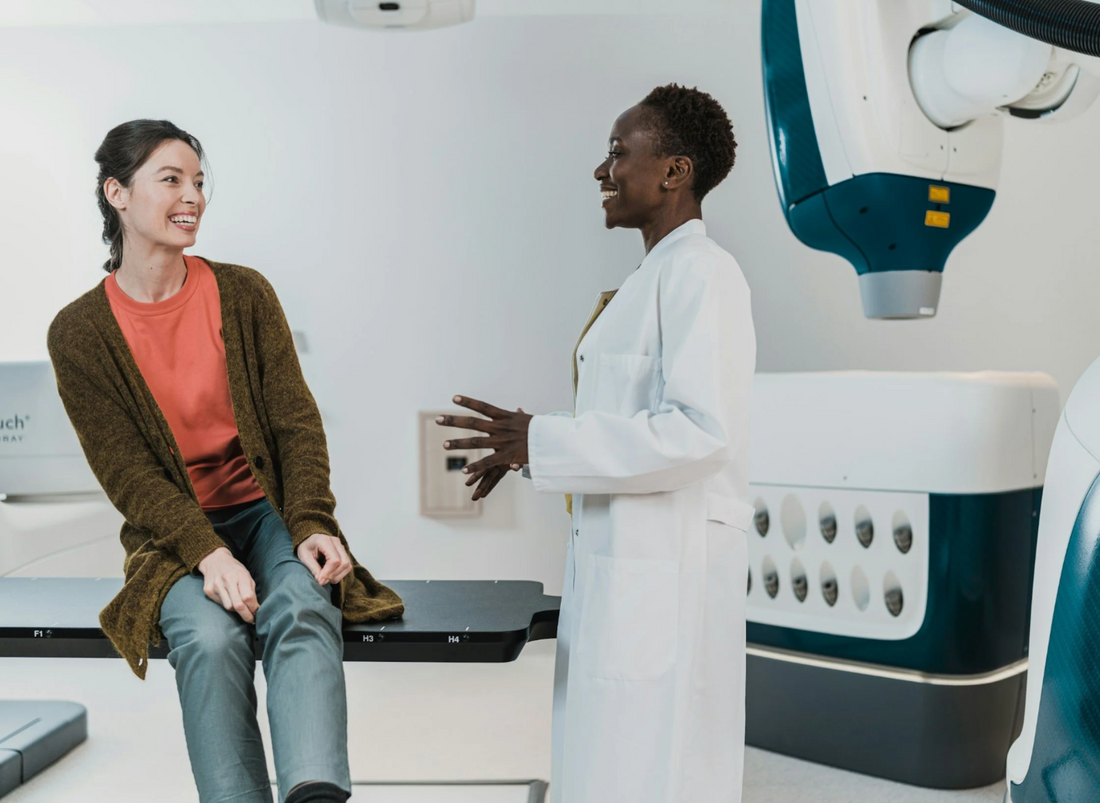
Understanding and Managing Endometriosis
What is Endometriosis?
Endometriosis is a chronic, inflammatory disease that affects parts of the body beyond the pelvic area, including the ovaries, fallopian tubes, large intestine, rectum, and bladder. It is a condition in which endometrial cells, similar to those found in the lining of the uterus, grow outside the uterus. This misplaced endometrial tissue can cause severe pain, heavy menstrual periods, and a range of other symptoms that significantly impact a woman’s sexual and reproductive health.
Endometriosis affects an estimated 5%-10% of women and adolescents of reproductive age (15-49 years), translating to approximately 176 million women worldwide. Up to 50% of women with infertility have endometriosis, making it one of the leading causes of infertility among women. Despite its prevalence, endometriosis remains underdiagnosed and misunderstood, often taking an average of 7 to 10 years for an endometriosis diagnosis to be confirmed after the onset of symptoms.
Causes and Risk Factors
The exact cause of endometriosis is unknown, but several theories have been proposed to explain its development. One widely accepted theory is retrograde menstruation, where menstrual blood flows backward through the fallopian tubes into the pelvic cavity instead of out of the body. This backward flow allows endometrial cells to implant and grow outside the uterus. However, retrograde menstruation occurs in 90% of women, while only 10% develop endometriosis, suggesting that additional factors play a role.
Risk Factors
Factors that raise the risk of developing endometriosis include:
- Family history: Women with a mother, sister, or daughter with endometriosis have a 7-10 times greater risk of developing the condition themselves.
- Obesity: Women with a higher body mass index (BMI) may have an increased risk due to elevated levels of estrogen, which can stimulate endometrial tissue growth.
- Smoking: Smoking has been linked to an increased risk of developing endometriosis, although the mechanism is not entirely understood.
- Hormonal imbalances: An overproduction of estrogen or a lack of progesterone may contribute to the development and progression of endometriosis.
- Early menstruation or late menopause: Starting menstruation before age 11 or experiencing menopause at an older age can increase the risk of endometriosis due to a longer exposure to estrogen.
Endometriosis Symptoms
Symptoms of endometriosis can range from mild to severe and may include:
- Pelvic pain: Chronic pelvic pain is the most common symptom of endometriosis, affecting up to 70% of women with the condition. This pain may be continuous or intermittent and can vary in intensity.
- Heavy menstrual periods: Women with endometriosis often experience heavy menstrual bleeding or prolonged periods. Approximately 40-60% of women with endometriosis report abnormal menstrual bleeding.
- Painful periods: Also known as dysmenorrhea, painful menstrual cramps are experienced by about 70% of women with endometriosis.
- Pain during sex: Painful intercourse is a frequent symptom due to endometrial tissue growth on reproductive organs, affecting 30-50% of women with the condition.
- Infertility: Endometriosis can lead to infertility, with up to 50% of women experiencing difficulty conceiving.
Other symptoms of endometriosis may include bowel movements that are painful or accompanied by blood, urinary symptoms such as urgency or pain, fatigue, bloating, and nausea. Endometriosis pain can be severe and worsen over time, especially during menstrual periods. However, some people with endometriosis have no symptoms and may only discover the condition through infertility issues or surgery.
Diagnosis and Stages
Initial Assessment
Diagnosis of endometriosis often begins with a review of medical history and a physical exam. During the pelvic exam, a healthcare provider may check for abnormalities such as cysts or tender areas in the pelvic region.
Imaging Tests
Imaging tests, including ultrasound, transvaginal ultrasound, and/or magnetic resonance imaging (MRI), may be ordered to visually examine tissues in the pelvic area. These imaging techniques can help detect endometriosis-related problems, such as ovarian cysts or other abnormalities, but they cannot definitively diagnose endometriosis. For example, only about 25-50% of endometriomas (ovarian cysts caused by endometriosis) are detected through standard ultrasounds, making advanced imaging or surgical assessment necessary.
Surgical Procedure for Diagnosis
A definitive diagnosis of endometriosis usually requires a surgical procedure called laparoscopy. During this minimally invasive procedure, a small camera is inserted into the pelvic cavity to allow direct visualization of any endometriosis lesions. If necessary, a biopsy of the tissue may be taken to confirm the diagnosis. According to recent studies, laparoscopy has a diagnostic accuracy rate of over 90%.
Staging of Endometriosis
Endometriosis can be classified into four stages (I-IV) based on the extent of lesions, adhesions, and involvement of pelvic organs:
- Stage I (Minimal): Superficial endometriosis with small lesions and minimal adhesions.
- Stage II (Mild): Mild endometriosis with more implants and deeper lesions.
- Stage III (Moderate): Moderate endometriosis with deep implants, possibly involving ovarian cysts (endometriomas).
- Stage IV (Severe): Severe endometriosis with extensive lesions, deep implants, large ovarian cysts, and significant adhesions.
These stages help determine the most appropriate treatment plan and predict potential impacts on fertility.
Treat Endometriosis
There is currently no cure for endometriosis, but several treatment options are available to help manage symptoms, slow the growth of endometrial implants, and improve a woman’s chances of getting pregnant.
Medications
- Pain medications: Nonsteroidal anti-inflammatory drugs (NSAIDs) like ibuprofen can help relieve pain and reduce inflammation. Approximately 80% of women report pain relief with NSAIDs, although they may not be effective for everyone.
- Hormonal treatments: Hormonal therapies, such as birth control pills, combined oral contraceptive pills, or progestins, can help regulate or stop menstruation, reducing endometrial tissue growth. Studies indicate that hormonal contraceptives provide relief for up to 90% of patients.
- Hormone therapy: This may include gonadotropin-releasing hormone (GnRH) agonists, which reduce estrogen production to shrink endometrial tissue. About 60-70% of women experience symptom improvement with GnRH therapy.
Surgical Treatment
Surgery may be offered to patients who have tried medications but continue to experience pain or other symptoms. Surgical options include:
- Laparoscopic surgery: A minimally invasive procedure to remove or destroy endometriosis lesions and scar tissue. Laparoscopic surgery is effective in improving pain in 60-80% of cases and can enhance fertility.
- Endometriosis surgery: This may involve more extensive procedures to remove large areas of endometriosis tissue or affected organs, especially in severe cases.
Other Treatments
- Complementary treatments: Alternative therapies, such as acupuncture, herbal remedies, and physical therapy, may help some individuals manage their symptoms. Research shows that acupuncture can reduce pain severity in 50% of patients with endometriosis.
- Lifestyle changes: Maintaining a healthy weight, regular exercise, and stress management can also be beneficial.
Managing Chronic Pelvic Pain
Chronic pelvic pain is a common symptom of endometriosis, affecting up to 70% of women throughout their menstrual cycle. This pain can be managed with a combination of pain medications, hormone therapy, and lifestyle changes.
Pain Management
- Nonsteroidal anti-inflammatory drugs (NSAIDs): Medications like ibuprofen or naproxen can help relieve pain. They are effective in managing mild to moderate pain in many patients.
- Hormone therapy: Hormonal treatments can help reduce pain symptoms by suppressing ovulation and reducing endometrial tissue growth.
- Pain medications: For severe pain, stronger prescription medications may be necessary. Opioids may be prescribed in extreme cases, though their use is carefully monitored due to the risk of dependence.
Lifestyle Changes
Managing chronic pelvic pain requires a comprehensive approach that includes medical treatment, lifestyle changes, and self-care. Regular physical activity, yoga, meditation, and other relaxation techniques can help alleviate pain symptoms and improve quality of life.
Endometriosis and Infertility
Endometriosis is a common cause of infertility in women, affecting fertility in various ways, including blocking the fallopian tube, causing ovarian cysts, and damaging the sperm or egg. It is estimated that 30-50% of women with endometriosis have difficulty conceiving.
Fertility Treatment Options
- Surgery: Surgical removal of endometrial tissue may improve fertility, particularly for those with mild to moderate endometriosis. Studies show that surgery can increase pregnancy rates by 30-50% for some women.
- Hormone therapy: Hormonal treatments can help improve fertility by regulating menstrual cycles and reducing inflammation.
- Assisted reproductive technologies: Procedures like in vitro fertilization (IVF) can be an option for women with endometriosis who cannot conceive naturally. IVF success rates in women with endometriosis vary, but studies suggest that outcomes can be comparable to those of women without the condition, especially after surgical treatment.
Menstrual Cycle and Its Role
The menstrual cycle plays a significant role in the development and progression of endometriosis. Each menstrual period can trigger inflammation and pain due to the abnormal presence of endometrial tissue outside the uterus. Understanding how the menstrual cycle affects endometriosis can help in managing the condition more effectively.
Lifestyle Changes and Self-Care
Lifestyle changes, such as maintaining a healthy weight, exercising regularly, and managing stress, can help manage endometriosis symptoms. Self-care practices like meditation, yoga, and deep breathing exercises can help reduce stress and manage pain. Making healthy lifestyle choices can help improve overall health and well-being.
Seeking Medical Help
If you suspect you have endometriosis, it’s essential to seek medical help from a healthcare provider. A healthcare provider can diagnose endometriosis and develop a personalized treatment plan. Seeking medical help early can help improve treatment outcomes and quality of life.
Endometriosis and Mental Health
Endometriosis can have a significant impact on mental health, including anxiety, depression, and stress. Up to 50% of women with endometriosis report symptoms of anxiety or depression. Managing endometriosis symptoms can be challenging, and seeking support from a mental health professional can be helpful.
Prognosis and Outlook
Endometriosis is a chronic condition that can cause potentially debilitating pelvic pain, heavy, painful periods, pain during sex, and infertility. There is no cure for endometriosis, but hormone therapy and surgical procedures can help manage symptoms. Symptoms often recur after these treatments, and ongoing management is necessary to control symptoms.
Final Thoughts
Endometriosis is a complex and multifaceted condition that requires a comprehensive approach to management. Understanding the causes, symptoms, and treatment options for endometriosis can help individuals take control of their health and well-being. Seeking medical help and support from healthcare providers, mental health professionals, and support groups can improve treatment outcomes and quality of life. With increased awareness, early diagnosis, and appropriate treatment, many women with endometriosis can lead fulfilling, productive lives despite the challenges of this chronic condition.
Learn more about Athena’s fertility test and gain initial insights within a few days.
Sources:
- American College of Obstetricians and Gynecologists (ACOG) acog.org
- Endometriosis Foundation of America endofound.org
- World Health Organization (WHO) who.int
- National Institute of Child Health and Human Development (NICHD) nichd.nih.gov
- Mayo Clinic mayoclinic.org
- National Institute for Health and Care Excellence (NICE) nice.org.uk
- Endometriosis UK endometriosis-uk.org
- Johns Hopkins Medicine hopkinsmedicine.org
